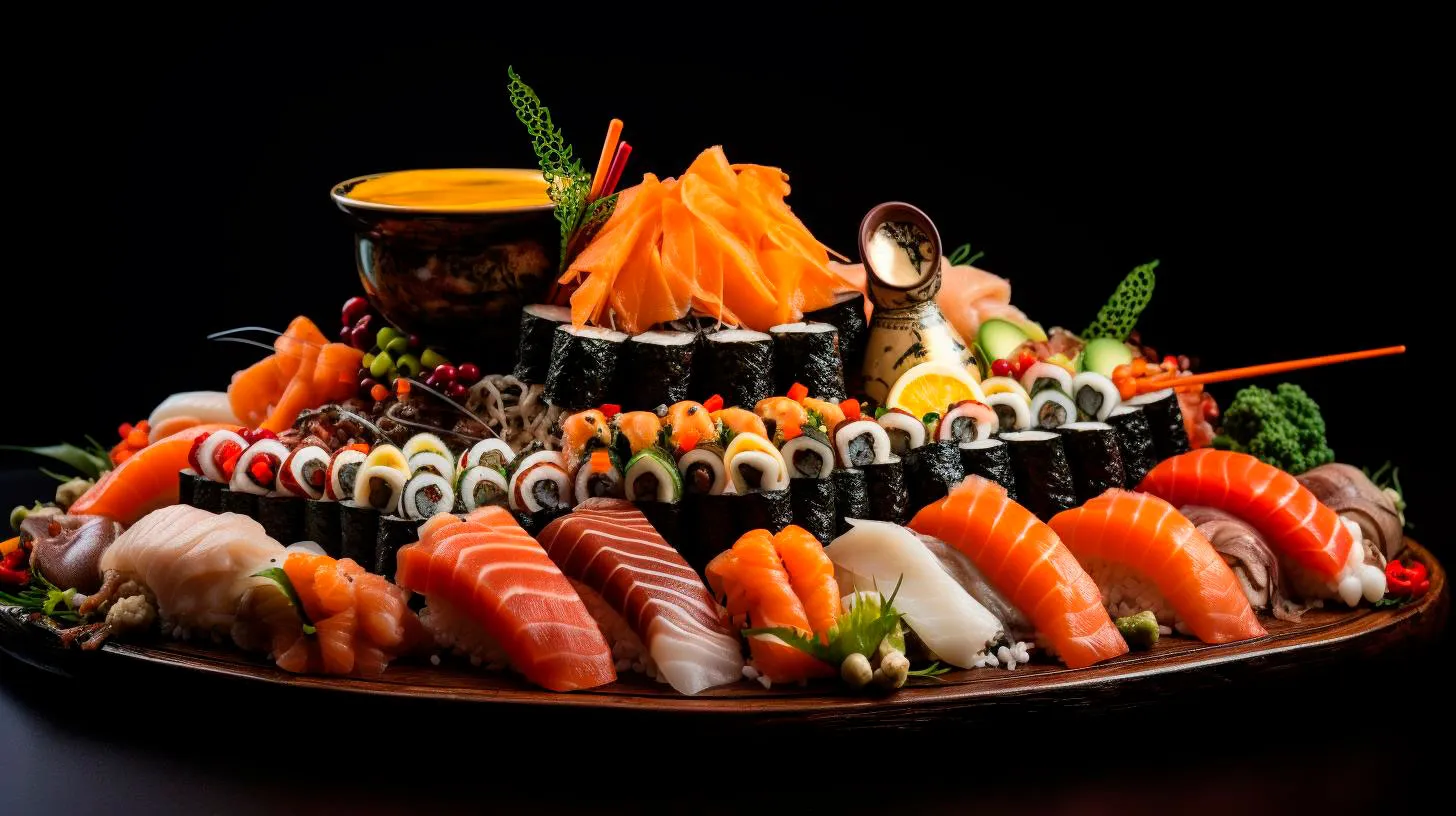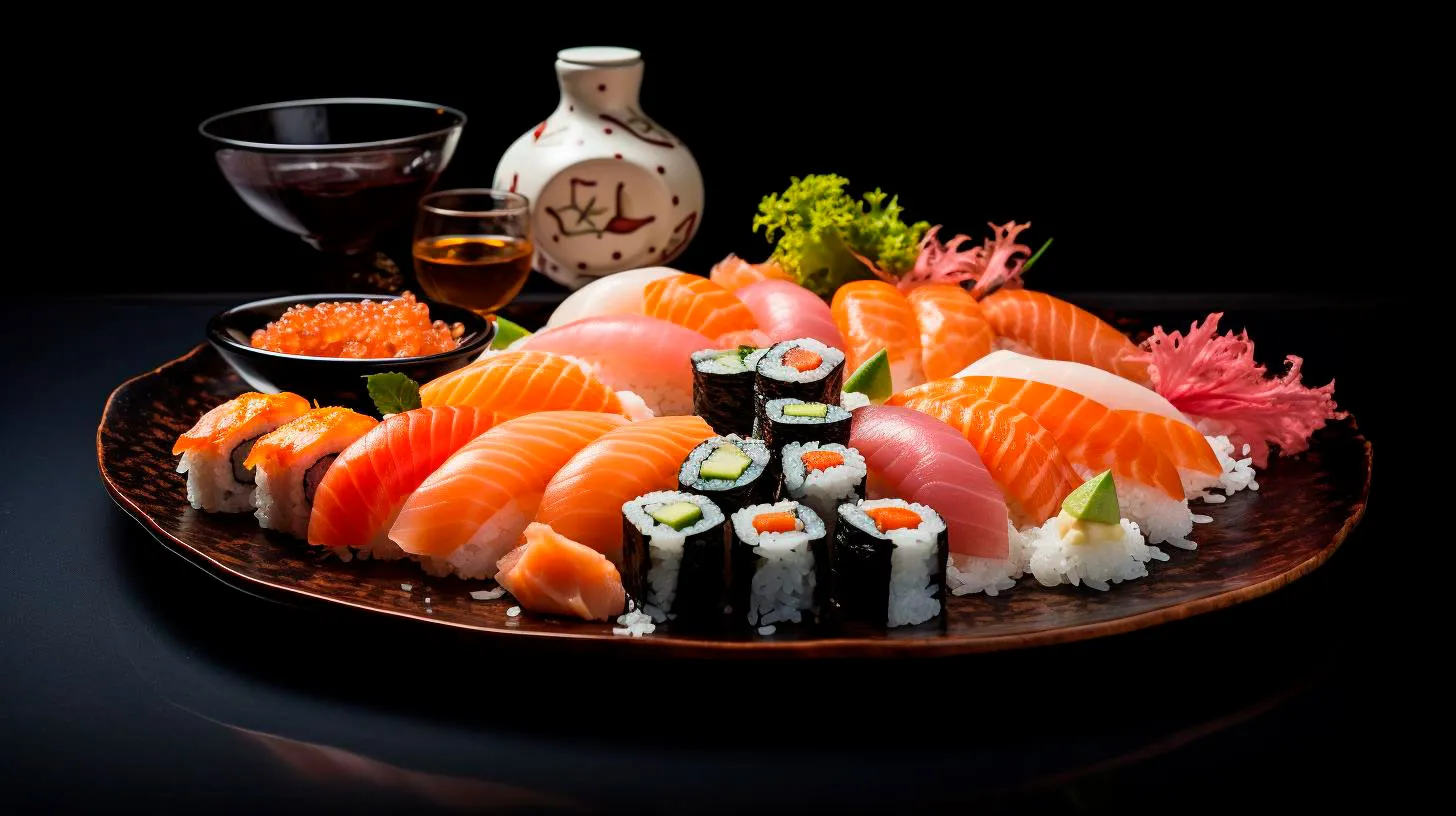The Artistry of Cultivating Tea Leaves
In this article, we will delve into the world of tea cultivation, exploring the processes involved and the factors that contribute to producing the perfect cup of tea.
Understanding the Stages of Tea Cultivation
Tea cultivation begins with selecting the right location. Tea plants thrive in regions with specific climate conditions, such as high altitude, ample rainfall, and well-drained soil. Once the ideal location is chosen, the art of tea cultivation unfolds through the following stages:
- Planting: Tea plants are typically grown from seeds or cuttings. The seedlings are carefully nurtured in nurseries before being transplanted to the plantation. This stage requires careful attention to ensure the plants establish strong roots.
- Pruning: Pruning plays a crucial role in shaping the tea plants and promoting healthy growth. Skilled workers meticulously trim the plants, removing any weak or diseased branches, which helps the leaves receive optimal sunlight and air circulation.
- Harvesting: The timing of tea leaf harvesting is crucial to capture the perfect balance of flavors. Experienced tea pluckers handpick the topmost, tender leaves and buds, known as the ‘flush.’ This delicate process requires precision and expertise to ensure the optimum quality of tea leaves.
- Withering: After harvesting, the tea leaves undergo a process called withering, where they are spread out and left to wilt. This process reduces moisture content and initiates chemical changes that develop the tea’s flavor profile.
- Rolling: Rolling breaks down the cellular structure of tea leaves, releasing essential oils and enzymes that contribute to the tea’s aroma and taste. Hand-rolling or mechanical rolling is employed, depending on the desired tea type.
- Oxidation/Fermentation: This process, unique to black and oolong teas, exposes the rolled leaves to oxygen, which triggers fermentation. The duration of oxidation affects the tea’s flavor, color, and aroma. Skilled artisans closely monitor and control this step to achieve the desired result.
- Drying: Tea leaves are carefully dried to remove any remaining moisture. This step preserves the tea’s freshness and extends its shelf life. Drying methods vary based on tea type, ranging from sun-drying to air-drying or machine-assisted drying.
- Sorting and Packaging: Finally, the tea leaves go through a meticulous sorting process. Different grades of tea are separated based on leaf size, appearance, and quality. Once sorted, the tea is carefully packaged to retain its freshness and flavor until it reaches the consumer.
The Artistic Advantages of Handcrafted Tea
While technology has advanced tea production, there is a growing appreciation for handcrafted tea. This artisanal approach offers several advantages that heighten the tea-drinking experience:
- Enhanced Quality: Handcrafted teas often undergo more delicate handling, resulting in superior flavor, aroma, and texture.
- Unique Flavors: Skilled artisans can experiment with different processing techniques, resulting in a wide range of flavors and tastes.
- Eco-Friendly: Artisanal tea production methods often prioritize sustainable farming practices, minimizing the use of chemicals and promoting biodiversity.
- Cultural Preservation: Handcrafted teas are often deeply rooted in local traditions and cultural practices, making each sip a journey of cultural exploration.
The Key Takeaways for Tea Lovers
As a tea lover, understanding the artistry behind cultivating tea leaves helps you appreciate the beverage on a whole new level. Here are the key takeaways to remember:
- Tea cultivation is a meticulous process that involves various stages, from planting to packaging.
- Each stage of tea cultivation requires skill, precision, and a deep understanding of nature.
- Handcrafted teas offer enhanced quality, unique flavors, and an eco-friendly approach.
- Exploring artisanal teas allows tea lovers to connect with local traditions and cultural heritage.
So, the next time you enjoy a cup of tea, take a moment to savor the artistry that went into cultivating those leaves. From the careful nurturing of plants to the expert hands that pluck, process, and package the tea, each sip is a testament to the dedication and craftsmanship of those who bring this soothing beverage to your table.
Unveiling the Secrets of Traditional Tea Production
In this article, we will take a deep dive into the world of traditional tea production, unraveling the mysteries that lie behind every cup of tea.
The Art of Traditional Tea Production
Tea production, especially of the traditional kind, requires a delicate balance of art, science, and expertise. From the cultivation of tea leaves to the harvesting, processing, and packaging, each step plays a crucial role in creating the perfect cup of tea.
Cultivation and Harvesting
It all begins with the cultivation of tea plants. Tea thrives in diverse climates around the world, but the most renowned tea-growing regions are often found in Asia, such as China, India, or Japan. These regions offer the perfect combination of soil, altitude, and temperature to produce top-quality tea leaves.
- To ensure the highest quality tea leaves, traditional tea gardens are often located at high altitudes, where the cooler temperatures slow down the growth process and enhance the flavors.
- Tea plants are meticulously cared for, with regular pruning and fertilization to encourage healthy growth.
- The art of harvesting tea leaves lies in plucking the right leaves at the right time. Usually, only the top two to three leaves and the unopened bud, known as the “flush,” are carefully hand-picked.
Processing and Oxidation
Once harvested, the tea leaves undergo a series of processing steps that vary depending on the type of tea being produced.
- Green tea, known for its fresh and grassy flavors, requires minimal processing. The leaves are typically subjected to a gentle withering and then quickly heated to prevent oxidation.
- Black tea, on the other hand, undergoes a more extensive process that includes withering, rolling, fermentation, and finally, drying. This process stimulates oxidation, giving black tea its rich and robust flavors.
- Oolong tea, with its unique floral and fruity notes, is a hybrid between green and black tea. The leaves are partially oxidized, resulting in a wide range of flavors and aromas.
The Advantages of Traditional Tea Production
Although modern tea production methods have emerged with the rise of mass production, traditional tea production still holds numerous advantages worth mentioning.
- Flavor and Aroma: Traditional tea production methods focus on preserving the natural flavors and aromas of the tea leaves, resulting in a more delightful and authentic tea-drinking experience.
- Craftsmanship: The artistry and expertise passed down through generations are evident in every cup of traditionally produced tea. Each step of the process is carefully executed by skilled tea masters.
- Environmental Sustainability: Traditional tea gardens often prioritize organic and sustainable farming practices, preserving the natural ecosystem and promoting biodiversity.
- Cultural Heritage: Traditional tea production is deeply rooted in the cultural heritage of tea-growing regions. By supporting traditional methods, we help preserve age-old traditions and the communities behind them.
Key Takeaways
- Traditional tea production involves a meticulous process from cultivation to packaging, ensuring the highest quality tea leaves.
- Tea leaves are harvested with precision, selecting the top leaves and the unopened bud for optimal flavor.
- Traditional tea production varies depending on the type of tea, with green, black, and oolong being the most popular.
- Traditional tea production methods preserve the natural flavors and aromas of the tea leaves, offering a more authentic tea-drinking experience.
- Choosing traditional tea supports cultural heritage, environmental sustainability, and the craftsmanship of tea masters.
In conclusion, the secrets of traditional tea production lie within the intricate processes and remarkable craftsmanship that go into each cup of tea. Exploring the world of traditional tea production not only enhances our appreciation for this timeless beverage but also sheds light on the importance of preserving cultural heritage and embracing sustainable practices. So, the next time you enjoy a cup of tea, take a moment to savor its flavors and imagine the journey it took to reach your cup.
Nurturing Heritage: Sustaining Tea Farming Practices
In this article, we will delve into the importance of nurturing heritage and sustaining tea farming practices.
Preserving the Essence of Traditional Tea Farming
Tea farming practices have been passed down from generation to generation, contributing to the unique flavors and qualities of different tea varieties. However, with modernization and the need for higher yields, traditional practices are at risk of being overshadowed. It is crucial to preserve these traditional methods for several reasons:
- Rich Cultural Heritage: Traditional tea farming practices are deeply rooted in culture and history. By preserving these practices, we honor and promote cultural diversity.
- Exceptional Tea Quality: Traditional farming techniques, such as hand-picking tea leaves and using organic fertilizers, result in superior tea quality. Modern methods may compromise the unique flavors and aromas that captivate tea enthusiasts worldwide.
- Sustainable Agriculture: Tea farming has a significant impact on the environment. By embracing traditional practices, we can minimize soil erosion, reduce chemical usage, and ensure agricultural sustainability.
Nurturing Sustainable Tea Plantations
With the increasing demand for tea, there is a growing need to develop sustainable and eco-friendly tea plantations. Embracing these practices benefits not only the tea industry but also the environment and local communities. Here are some essential features and advantages of sustainable tea farming:
1. Organic Farming:
Organic tea farming eliminates the use of synthetic pesticides and fertilizers, ensuring that your cup of tea is free from harmful chemicals. By focusing on natural pest control methods and organic fertilizers, farmers contribute to the overall well-being of the ecosystem.
2. Biodiversity Preservation:
Sustainable tea farming practices prioritize biodiversity. By preserving natural habitats surrounding tea plantations, farmers create a conducive environment for birds, insects, and other wildlife. This promotes a balanced ecosystem and helps maintain the delicate ecological balance.
3. Fair Trade and Ethical Sourcing:
Sustainability extends beyond ecological considerations. Fair trade practices ensure that tea farmers receive fair wages and work in safe conditions. Ethical sourcing guarantees that tea cultivation does not involve child labor or exploitation, promoting social equity and justice within the industry.
4. Water Conservation:
Tea farming requires ample water resources. To minimize water usage, sustainable tea plantations harness rainwater harvesting techniques, such as reservoirs and efficient irrigation systems. These practices reduce water waste and contribute to the broader goal of water conservation.
Key Takeaways
As tea enthusiasts, it is our responsibility to support and promote sustainable tea farming practices. By nurturing heritage and embracing sustainable techniques, we can enjoy the rich flavors of tea while safeguarding our environment and preserving cultural traditions.
In summary, here are the key takeaways:
- Nurturing heritage helps preserve cultural practices and honor the rich history of tea farming.
- Sustainable tea farming practices contribute to exceptional tea quality and maintain the unique flavors and aromas of different tea varieties.
- Organic farming, biodiversity preservation, fair trade, and water conservation are crucial components of sustainable tea plantations.
- Supporting sustainable tea farming benefits the environment, local communities, and ensures a more equitable tea industry.
Let us appreciate every sip of tea, knowing that we are contributing to the sustainability of this ancient and beloved beverage.
Preserving Ancient Tea Farming Techniques
The Timeless Wisdom of Ancient Tea Farming
Tea, a beverage cherished by many across the globe, has been cultivated for centuries. Ancient tea farming techniques have been passed down from generation to generation, reflecting the deep-rooted cultural significance of this practice. Keeping these traditions alive allows us to appreciate the craftsmanship and the connection between nature and humanity that it represents.
Preserving ancient tea farming techniques comes with a multitude of advantages:
- Retaining cultural heritage: By honoring and preserving the techniques used by our forefathers, we keep their legacy alive and ensure that future generations can appreciate the depth of history and knowledge behind each cup of tea.
- Promoting sustainability: Ancient tea farming techniques often revolve around sustainable practices, such as organic farming and natural pest control methods. By adopting and maintaining these techniques, we support a more eco-friendly approach to agriculture.
- Enhancing flavor profiles: The unique flavors and aromas associated with teas cultivated using ancient techniques are an irreplaceable part of the tea-drinking experience. These methods emphasize the importance of soil quality, climate, and other factors that contribute to superior taste.
The Modern Twist: Merging Tradition with Innovation
In our technologically advanced era, it is only natural to wonder if ancient tea farming techniques can be harmonized with modern practices. The answer lies in finding a balance that brings out the best of both worlds:
- Adopting sustainable technologies: Incorporating modern tools and technologies into ancient tea farming techniques can increase efficiency without compromising the integrity of the practice. For example, drip irrigation systems can help conserve water while ensuring optimal hydration for tea plants.
- Investing in research and development: Embracing scientific advancements enables tea farmers to refine their techniques and adapt to changing climates or pest management challenges. When combined with ancient wisdom, this approach allows for innovation while preserving the essence of traditional farming.
- Forging partnerships: Collaborations between traditional tea farmers and tech-savvy entrepreneurs foster an exchange of ideas and experiences. This synergy can lead to groundbreaking solutions that enhance productivity, sustainability, and economic viability for both parties.
The Significance of Ancient Tea Farming Techniques Today
While ancient tea farming techniques may seem distant from our modern lives, their relevance and importance cannot be understated. Consider the following key takeaways:
- Maintaining biodiversity: Ancient farming methods prioritize the preservation of diverse plant species and ecosystems, contributing to the overall health and resilience of our planet.
- Supporting local communities: The cultivation of tea using traditional methods often occurs within close-knit rural communities. By preserving these techniques, we help sustain livelihoods and foster cultural exchange.
- Encouraging mindfulness: The patience and mindfulness embedded in ancient tea farming techniques provide an opportunity for individuals to disconnect from the chaos of daily life and immerse themselves in a more contemplative and serene experience.
In conclusion, preserving ancient tea farming techniques is essential not only for honoring our ancestors but also for the future of tea cultivation and the environment. By embracing traditional wisdom alongside modern innovation, we can enjoy the refreshing taste of tea while ensuring the sustainability of this beloved beverage for generations to come.


